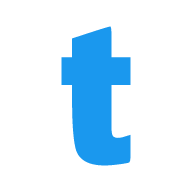Summary
New launches like the Venu X1 and Index Sleep Monitor are helping Garmin reach a wider audience.
Source: Tom's Guide

AI News Q&A (Free Content)
Q1: What are the key features of Garmin's latest Venu X1 smartwatch, and how does it position itself in the market compared to competitors like the Apple Watch?
A1: The Garmin Venu X1 is priced at $799.99 and features a titanium case, sapphire crystal display, and a medical-grade health monitoring system. It is Garmin's thinnest and largest-screen smartwatch, marking a strategic entry into the luxury smartwatch segment to compete with high-end models like the Apple Watch Ultra. It offers advanced health monitoring capabilities and is available in two color options: Black with Slate Gray Titanium Back and Moss Green with Titanium Back.
Q2: How does the Garmin Index Sleep Monitor enhance sleep tracking and recovery for users?
A2: The Garmin Index Sleep Monitor is an ultra-comfortable, lightweight armband designed to track sleep stages, heart rate variability, breathing variations, and skin temperature. It provides a comprehensive view of sleep quality and recovery, featuring up to 7 nights of battery life and a vibrating alarm. This screenless device offers insights into sleep patterns and overall fitness, positioning itself as a unique tool within Garmin's health and wellness product lineup.
Q3: What recent advancements in wearable technology are highlighted in scholarly articles, and how do they influence health monitoring?
A3: Recent scholarly articles emphasize the miniaturization of AI accelerators and the development of AI-native runtimes for wearable devices. These advancements enable proactive health monitoring and personalized recommendations for wearables, utilizing machine learning models to identify health risks based on user data. The integration of ultra-low-power AI accelerators is paving the way for more autonomous and interconnected wearable technologies.
Q4: What is the potential impact of sleep monitoring devices on health, according to recent research?
A4: Research indicates that sleep monitoring devices, like the Garmin Index Sleep Monitor, can significantly impact health by providing detailed insights into sleep quality. These devices help users understand their sleep patterns, which can lead to better health outcomes by reducing sedentary behavior and improving sleep duration. They are essential tools in managing conditions such as diabetes, where proper sleep is linked to better glucose control.
Q5: How does the Garmin Venu X1 differentiate itself in terms of design and functionality from other Garmin models?
A5: The Garmin Venu X1 stands out with its premium design, featuring a 2-inch square AMOLED display and an ultra-slim 7.9mm profile. It is the brand's thinnest smartwatch with the largest display, incorporating a titanium case and sapphire crystal lens for durability. Unlike other Garmin models, it offers a Smart Wake Alarm feature, previously not available in models like the Fenix 8 or Forerunner series, demonstrating Garmin's push into the luxury smartwatch market.
Q6: What are the strategic implications of Garmin's expansion into luxury smartwatches for the company's market position?
A6: Garmin's entry into the luxury smartwatch market with the Venu X1 represents a strategic shift from its traditional focus on outdoor and sports watches to competing with high-end brands like Apple and Samsung. This move allows Garmin to tap into a broader consumer base seeking premium smartwatches with advanced health monitoring features, potentially increasing its market share and brand prestige in the smartwatch industry.
Q7: What technological innovations in wearables are enabling more personalized health monitoring solutions?
A7: Technological innovations in wearables, such as the integration of AI accelerators and the development of distributed wearable AI networks, are enabling more personalized health monitoring solutions. These innovations allow for the dynamic orchestration of resources, providing users with tailored health insights. The use of machine learning models to recommend appropriate wearables based on individual health attributes further enhances the personalization of health monitoring.
References:
- HealthAdvisor: Recommendation System for Wearable Technologies enabling Proactive Health Monitoring
- An AI-Native Runtime for Multi-Wearable Environments






